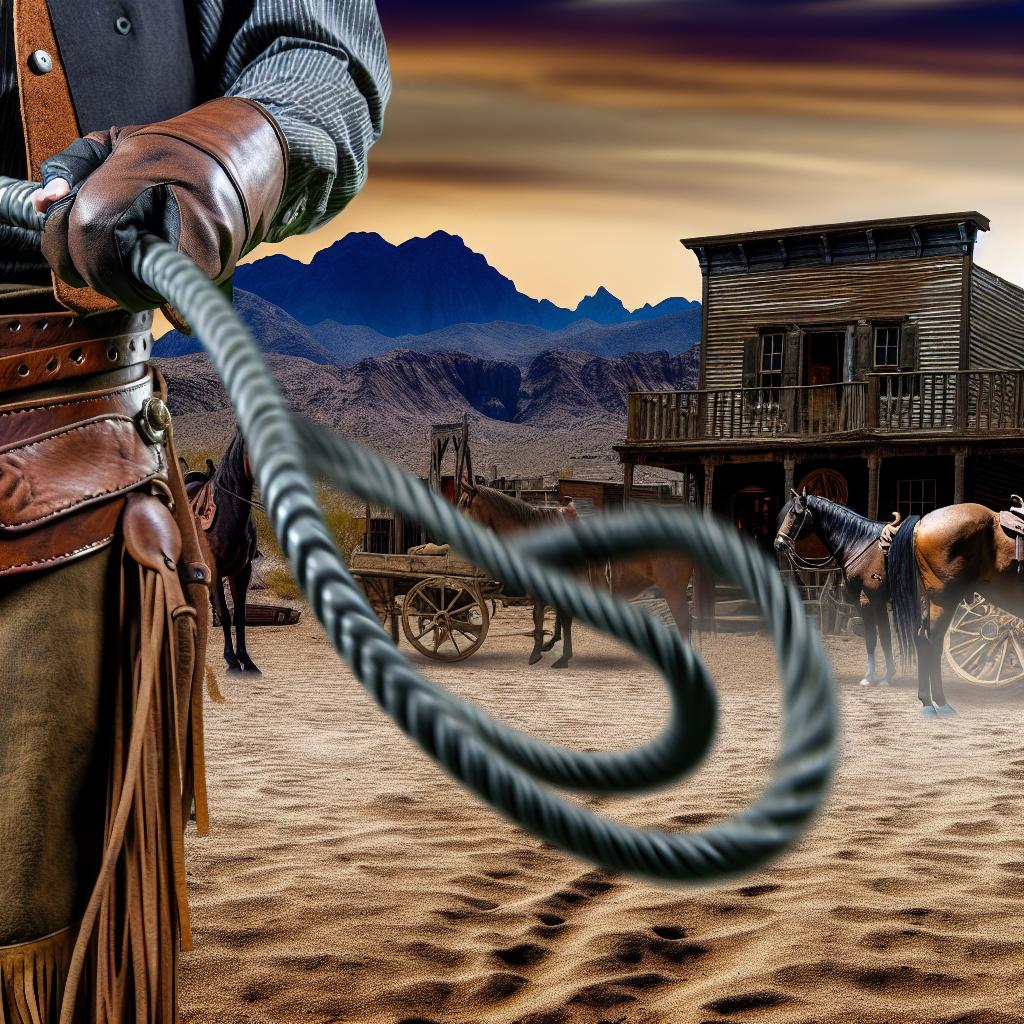
How bullwhips became a symbol of the Wild West.
The Bullwhip: An Icon of the Wild West
The bullwhip stands as a defining emblem of the American Wild West, cutting a distinct silhouette against the vast plains and rugged terrain. Although initially a practical tool, its evolution into a cultural symbol narrates a story of the era’s history and dynamics.
Origins and Evolution
Initially, the bullwhip served a functional purpose, primarily used by drovers for herding cattle. Its innovative design, characterized by a lengthy, flexible structure culminating in a skinny, tapered lash, allowed for the production of a loud cracking sound. Notably, this sound is actually a miniature sonic boom, effectively used to communicate with cattle across wide spaces without causing them harm.
By the 19th century’s midpoint, with cattle ranching on the rise, the bullwhip’s utility saw an increase. European settlers and cowboys embraced this tool, and it became woven into cowboy culture. Its adaptation was not merely for its practicality but because it suited the demands and challenges faced by those living and working across the western frontiers.
The Bullwhip as a Tool
The bullwhip, as a physical object, comprises different components contributing to its effectiveness and durability. Each whip typically consists of a handle, a thong, a fall, and a cracker or popper. The handle provides the user with grip and control, while the thong serves as the lengthy body of the whip. The fall and cracker, at the whip’s terminal end, are crucial for generating the distinctive cracking sound, which action traditionally signaled to cattle.
A potential user’s effectiveness depended largely on their skill level. Mastery of the bullwhip required significant practice to achieve accuracy and avoid self-injury. Its use was not merely about wielding a tool but entailed a certain finesse—an art form—part and parcel of cowboy culture. This element of skill transitioned the bullwhip from its purely functional roots to a representation of frontier dexterity.
Symbolism in the Wild West
The bullwhip’s link with cowboy legends largely stems from its practical utility and how it is portrayed in storytelling mediums, including folk tales and literature, which later transitioned into cinema. As the mythos of the Wild West underwent romanticization, the bullwhip emerged as an icon epitomizing frontier life and its ousted values, such as self-reliance, ruggedness, and independence.
In an era characterized by regions where law and order were intermittent at best, the efficiency encapsulated in the bullwhip symbolized the innovations and resourceful adaptations of the frontier people. Mastery of the bullwhip implied a skill level highly respected in cowboy communities and thus contributed to its symbolic appeal.
Historical Context
The integration of the bullwhip into cowboy culture also suggests the broader socio-economic backdrop of the 19th-century American West. The cattle industry was booming, indicating a demand for tools and techniques to manage large herds across expansive terrains. The bullwhip was among the innovations that arose to meet these challenges.
In numerous ways, the bullwhip represents the larger narrative of American expansion and economic development during the period. It points to a time when technological and practical innovations were implemented out of necessity, resulting in unique cultural artifacts like the bullwhip, which persist even in modern nostalgic depictions of this era.
Bullwhips in Popular Culture
The romanticized image of the Wild West has undergone continuous development through books, films, and television, where the bullwhip is a recurrent symbol. Characters from fictional chronicles, like Indiana Jones, have cemented the bullwhip’s stature as an emblem of adventure, courage, and audacity. These portrayals have significantly contributed to the bullwhip’s entrenched position in Western-themed entertainment and a broader cultural narrative.
Cinema and television often dramatize bullwhips, highlighting their usage as a testament to Western flair and expertise, not merely as practical tools. Many cinematic narratives present cowboys and adventurers deftly maneuvering their bullwhips with both style and accuracy, merging functionality with spectacle.
In creative storytelling, the bullwhip often transcends its utility to become a storyteller in itself. Its crack is a signal of presence, command, and sometimes drama, marking its place not only on the physical frontier but also in the mental landscape of Western adventure.
Contemporary Relevance
In modern times, the bullwhip remains a curiosity and is employed in a variety of practices today. Some enthusiasts study its use in performance arts, including circuses and exhibitions, where it maintains its central role for entertainment rather than livestock management.
Furthermore, the bullwhip has secured a place in martial art forms, emphasizing the blend of rhythmic and controlled movement, and echoing its historical use as both a tool of utility and emotional expression. The practice and mastery of the bullwhip within these domains preserve an element of its historical narrative while adapting to new cultural contexts.
Conclusion
While the bullwhip retains its function as a herding implement, its transformation into a symbol of the Wild West underscores the intricate layers of cultural evolution. From its origins as an essential cattle-herding tool to a revered element of American mythology, the bullwhip continues to endure in the Wild West narrative. It encapsulates the resilience, adaptability, and spirit of a bygone era, offering insights into how tools of necessity become embedded in culture and memory, transcending their original purpose to speak to broader themes of identity, adventure, and survival.